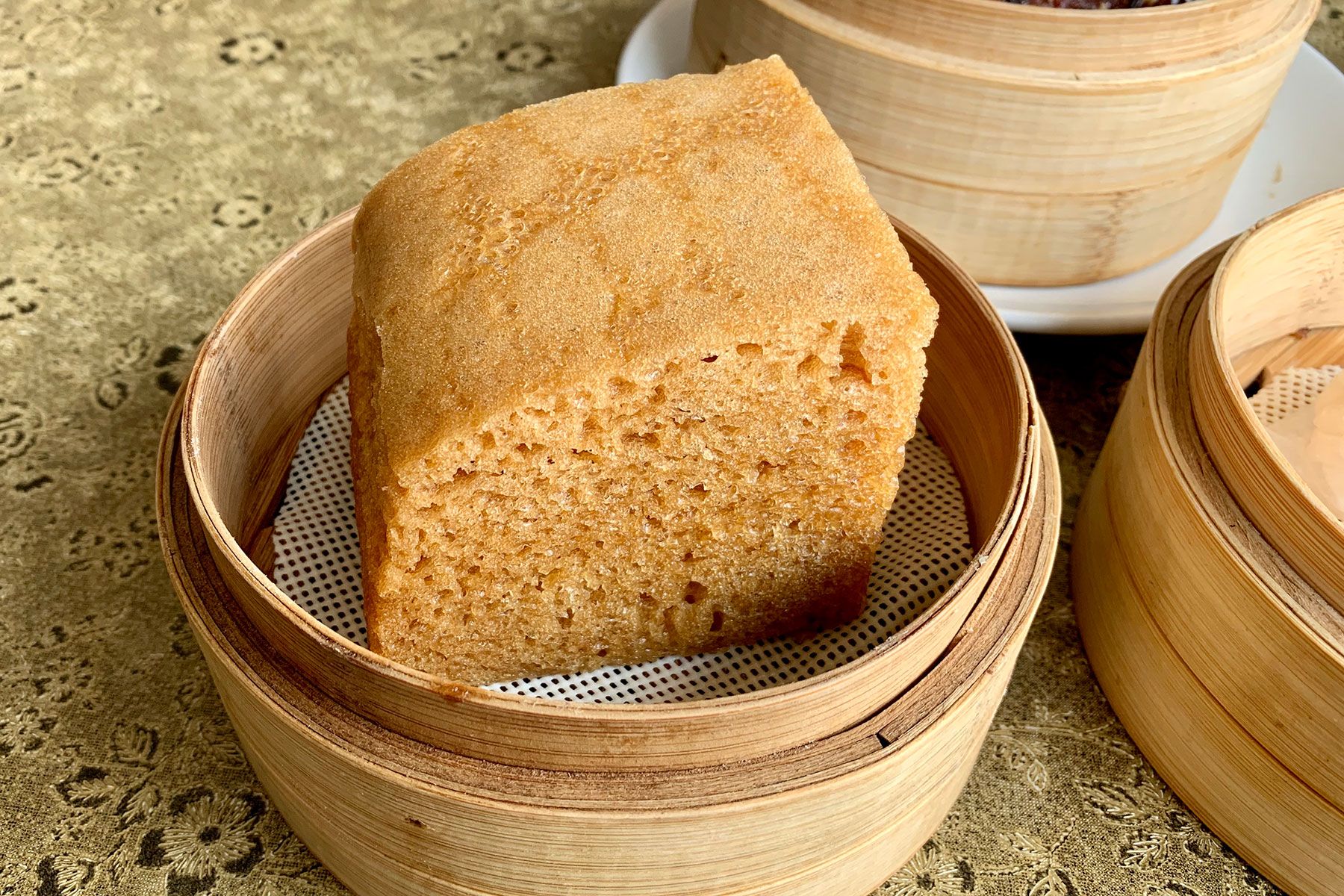A beloved staple of dim sum cuisine, this steamed pastry is deceivingly complex in more ways than one
"Ma lai go, ma lai go!" The waitress calls out amidst a packed, fluorescent-lit dining room as she hoists a large bamboo steamer from the kitchen. As diners scramble from their tables to inspect the new arrival, the waitress removes the lid in one swift upward motion, letting burst a plume of scalding steam which dissipates to reveal a smooth dome of fluffy dough the size of a serving tray, coloured a uniform peanut brown and marked by shallow, scale-like striations known as a 'Qilin pattern'. Such a scene repeats itself a dozen times each day at Lin Heung Teahouse in Sheung Wan, a veritable time capsule of old dim sum culture and one of the foremost restaurants to try Malay sponge cake, or ma lai go in Cantonese—a quotidian and delicious dim sum that many Hongkongers recall growing up with, yet few know of its origins.

Origins
Despite the name quite explicitly tying it to Malaysia, there remain several murky theories surrounding the birth of ma lai go, all of which speak to the centuries-long history of Chinese migration and Western colonialism in the South China Sea. Its airy, sponge-like structure hints at its roots in European pastries such as the Victoria sponge cake, popular in Britain during the reign of the eponymous monarch and likely imported to British Malaya.
The sponge cake likely spread from the households of British colonial administrators into the general Malaysian populace who, lacking the ovens that were so foreign to Asian gastronomy, adapted the recipe to be made by steaming instead. Milk was also replaced with coconut milk, while pandan leaves were added for that inimitable Peranakan flavour.
Eventually, the recipe travelled to Guangdong, where it was again adapted: coconut milk was reverted back to cow's milk, and pandan leaves (now foreign themselves) were dropped due to the difficulty in their procurement. Today, the name remains the most overt clue to the Malay sponge cake's ocean-crossing history, and curiously, it has become a rarity in its supposed homeland of Malaysia, perhaps having been absorbed into the sweets-making tradition of kuih.
See also: Meet Alison Chan, The Pastry Chef Creates Illusion Cakes Inspired By Everyday Objects
